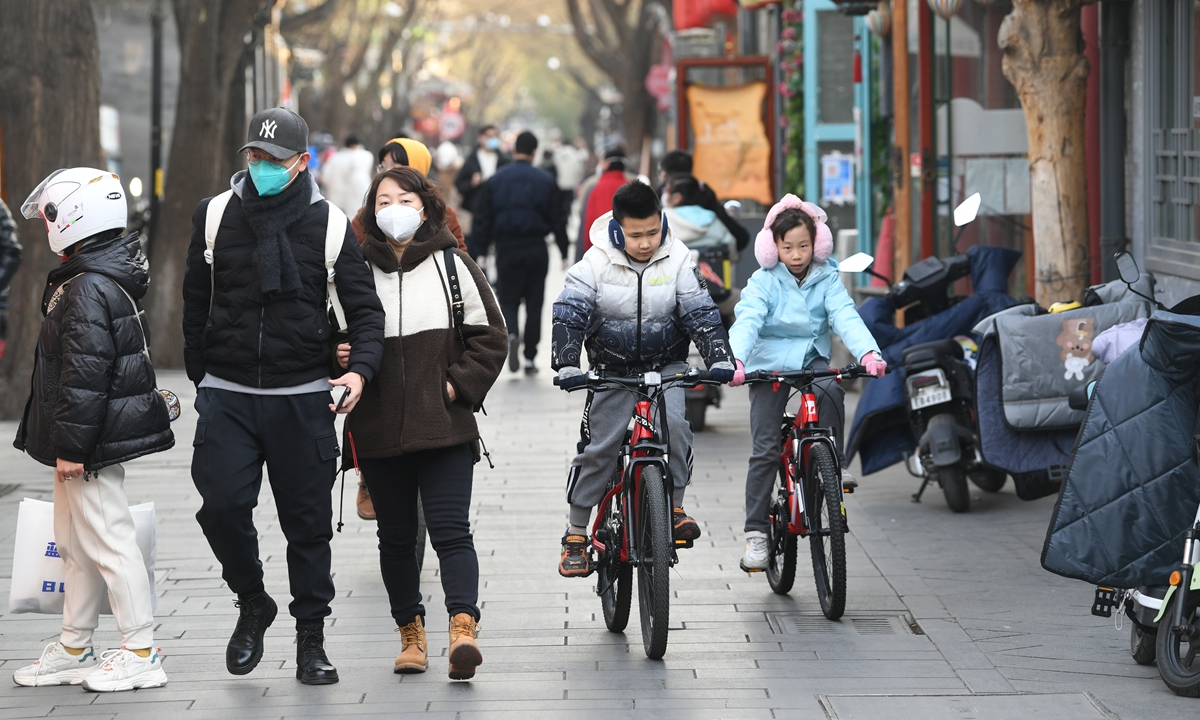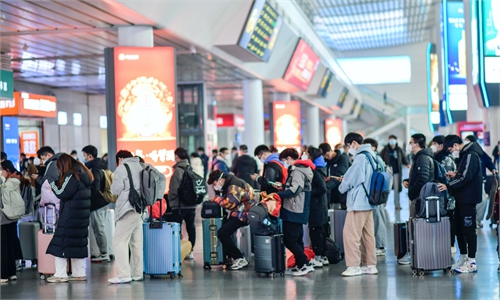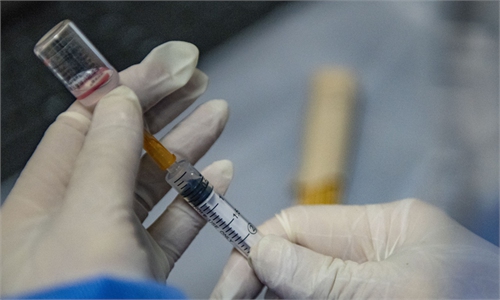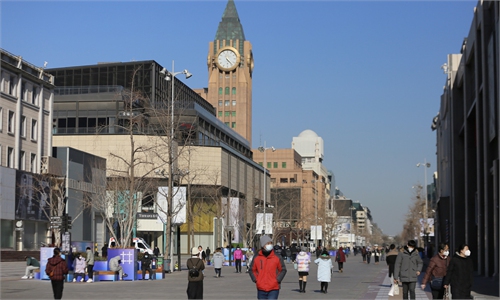Conditions for downgrading COVID management becoming mature in China: academician Zhang Boli

A pedestrian strip in Beijing on December 7, 2022. Photo: IC
Conditions for treating COVID-19 scaled back to Class B control measures for infectious diseases are becoming more mature in China, Zhang Boli, academician from the Chinese Academy of Engineering said in addressing the subject of downgrading management and control of the disease, the Science and Technology Daily reported on Wednesday.
Downgrading management represents a significant adjustment of epidemic prevention and should be done in small increments, Zhang said.
Some experts recently pointed out that it is inappropriate to continue treating COVID-19, a Class B infectious disease with Class A control measures, since the virulence of Omicron has weakened and its fatality rate has decreased despite stronger transmissibility. More than 98 percent individuals infected with Omicron are either asymptomatic or only present mild symptoms.
In response to recent policy changes, Zhang stated adjustment on the management of the disease should be made in an orderly manner and in small steps at a time.
Downgrading the management on COVID-19 can free up a large quantity of medical resources from makeshift hospitals which can be redeployed to normal medical treatment in addition to protecting vulnerable groups, and will serve to provide a legal basis for further optimization of prevention and control measures in the future, Zhang said.
In January of 2020, China's National Health Commission announced that COVID-19 would be classified as a Class B infectious disease but would treat it with Class A control measures. The decision was made based on the then recognition and knowledge of the etiology, epidemiology and clinical features of the virus at that time.
"Even nowadays the decision still seems wise and decisive, since it has prevented hundreds of millions of people from being infected, saving hundreds of thousands of lives, as well as gaining a window of opportunity to buy time for the vaccine rollout, drug development and accumulating treatment experience, laying a solid foundation for achieving initial results in the prevention and control of COVID-19," Zhang told Science and Technology Daily.
According to Zhang, the virulence has obviously weakened gradually with its continuous mutation after the epidemic had been circulating for nearly three years.
Statistics announced during a press briefing by the State Council's joint prevention and control mechanism against COVID-19 on November 29 revealed that the pathogenicity and virulence of Omicron mutant strain and its evolutionary branches including BA.1, BA.2, BA.5 and BF.7, BQ.1 and XBB have weakened apparently compared with the original strain and other variants such as Delta.
A COVID outbreak in Guangzhou, South China's Guangdong Province registered an accumulated 160,000 local infections with asymptomatic carriers accounting for nearly 90 percent. It so far has reported only four severe or critically ill cases and zero deaths.
Zhang said the conditions for continuing treating COVID-19 with Class A control measures have reduced from the perspective of the characteristics of the virus and the disease.
The State Council's joint prevention and control mechanism against COVID-19 issued a new 10-point plan on Wednesday to further optimize the country's COVID response.
The measures including scientifically and precisely designation of risk areas, prohibition on any form of temporary lockdown, further narrowing the scope of and reducing the frequency of nucleic acid testing, and home quarantine for asymptomatic carriers and patients with mild symptoms who meet certain requirements, are all adjustments made according to the control measures of Class B or C infectious diseases, according to the Science and Technology Daily.
Whether COVID-19 continues to be treated with Class A control measures should be reconsidered, to strike a balance between anti-epidemic and the economic and social development requirements, Zhang said, noting the current control measures were more in line with Class B control practices.
Global Times



